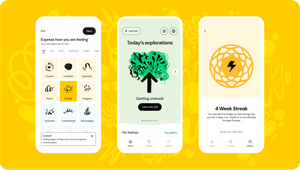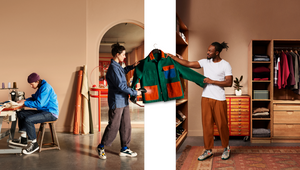
The UI Groove: How to Make GenAI Riff on Anticipatory Experiences

The dream is to help businesses anticipate customers’ needs on an individual level. Getting down to that granular level is still very time-consuming, but not for long.
Traditionally, developers meticulously craft user interfaces (UIs) for specific use cases. This process is labour-intensive, lacks adaptability and results in static interfaces with limited personalisation options. Imagine dynamically generating the entire UI, tailored to each user.
From a developer’s perspective, building UIs involves orchestrating front-end technologies like React, HTML, CSS and JavaScript. Design systems define standardised components and patterns, forming the foundation. However, developers currently assemble UIs manually, screen by screen.
Here is an idea: Large language models (LLMs) like ChatGPT and Phind have demonstrated their ability to generate code. Could we use them to generate personalised React code at the page level, incorporating each user’s unique data?
Not only is this approach being thought about and discussed in meeting rooms, but it could become a reality in the field of generative AI in the near future.
The Key Elements You Need:
React Component Library: The design system should be represented as a readily available library of React components. The LLM then selects the most relevant components to build the user’s personalised UI on the fly.
Seed Parameters and Caching: Generating unique LLM outputs for every user might be inefficient. Caching responses for users with similar seed parameters can significantly improve speed.
Balancing Flexibility and Consistency:
Maintaining a delicate balance between UI flexibility and design system consistency is a key challenge. Personalised UIs offer individual adaptability, but they must seamlessly adhere to established brand guidelines.
Robust Component Library and Design Tokens: Ensure visual consistency across diverse UI variations by implementing a robust component library and design tokens for typography and colour palettes.
Dynamic Theming and Style Overrides: Allow personalised UI elements to harmonise with the design system using dynamic theming and style overrides, fostering a cohesive user experience.
Validating and Refining:
User feedback and A/B testing are invaluable tools for refining and validating personalised UIs. Leverage analytics platforms and user feedback mechanisms to gain insights into engagement, satisfaction and conversion metrics.
A/B testing allows for systematic experimentation with different UI variations, enabling data-driven decisions to optimise the user experience. Integrate feedback loops into the development life cycle to rapidly iterate, refine personalisation algorithms and UI components and align them with user preferences and business objectives.
The Future: Personalised and Consistent UIs
The synergy between personalisation and a unified design system holds immense potential for shaping the future of user interfaces. As UI developers push the boundaries, seamless integration of personalisation within the fabric of brand consistency will drive innovation and elevate user experiences to new heights. By embracing the convergence of design, technology and user-centric principles, UI developers can chart a course toward a future where every interaction is unique yet unmistakably reflects the brand’s identity.
Navigating the Complexity:
Behind the scenes, sophisticated algorithms interpret user data and context to dynamically generate personalised UIs. UI developers now face data pre-processing, feature extraction and model-training complexities.
Techniques like collaborative filtering, natural language processing (NLP) and reinforcement learning become crucial for deciphering user preferences and behaviour from diverse data sources. Scalable data pipelines and distributed computing architectures are essential for the efficient processing of vast datasets, enabling real-time UI element generation.
This complex process may seem daunting, but the potential rewards in user engagement and satisfaction are well worth the effort. With careful planning and collaboration between designers, developers and data scientists, the future of personalised, consistent and dynamic UIs is bright.
Shashanka Nataraj is a senior staff engineer at Code and Theory. Shashanka has 15 years of experience in building and shaping user interfaces at tech companies, including Kloudspot, Cisco, NetApp and more. By night he’s a gamer, Carnatic violinist and an avid student of the Japanese language.















